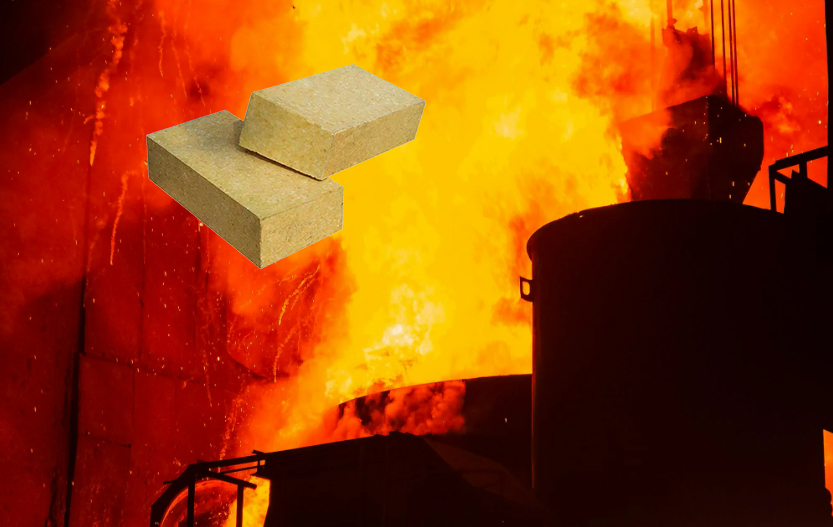List of Special Refractories: Categories and Detailed Examples

Special refractories are high-performance materials designed for the most demanding thermal, mechanical, and chemical environments. They are essential in industries such as aerospace, nuclear power, steelmaking, electronics, and chemical processing.

Based on their chemical composition and structural characteristics, special refractories can be divided into five major categories:
1. High-Melting Oxide Materials and Their Composites
These oxides are chemically stable and can resist very high temperatures in oxidizing atmospheres. They are often used as linings for steel furnaces, glass tanks, cement kilns, and incinerators, where they come in contact with molten metals, slags, and aggressive gases.
- Aluminum oxide (Al₂O₃):
A cornerstone of high-performance ceramics, used in steel ladles and as an abrasive. - Magnesium oxide (MgO):
Resistant to basic slags; widely used in steelmaking. - Zirconium oxide (ZrO₂):
Excellent corrosion resistance and thermal shock stability; used in nuclear applications and oxygen sensors. - Beryllium oxide (BeO):
High thermal conductivity and electrical insulation; used in electronics and military tech. - Fused silica (SiO₂):
Low thermal expansion; good for casting molds and precision glassware. - Calcium oxide (CaO):
Reacts with acidic slags; used in basic oxygen furnaces. - Magnesia-alumina spinel (MgO·Al₂O₃):
Combines MgO's basicity and Al₂O₃'s toughness—widely used in cement kilns.
Further reading: Special Oxide Refractories And Their Applications
2. Refractory Compounds (Carbides, Nitrides, Borides, Silicides) and Their Composites
These non-oxide ceramics are usually synthetic, created through high-temperature chemical reactions. They excel in reducing environments, high-wear conditions, and chemically aggressive systems.
- Silicon carbide (SiC):
High hardness, thermal conductivity, and corrosion resistance; used in kiln furniture, crucibles, and high-efficiency burners. - Boron carbide (B₄C):
Extremely hard and chemically inert; used in armor, abrasive tools, and neutron shielding. - Silicon nitride (Si₃N₄):
Low thermal expansion and high fracture toughness; used in turbochargers and engine components. - Aluminum nitride (AlN):
Electrically insulating but thermally conductive; used in electronic substrates. - Molybdenum disilicide (MoSi₂):
Withstands high temperatures in oxidizing atmospheres; used in heating elements. - Zirconium boride (ZrB₂) and Lanthanum boride (LaB₆):
Exceptional thermal and electrical properties; used in thermionic devices and aerospace coatings.
Further reading: What Are the Special Refractories Widely Used in Modern Industry?
3. Metal-Ceramic Composites (Cermets)
Cermets combine ceramic hardness and thermal resistance with the ductility and toughness of metals, making them ideal for high-load, wear-intensive environments.
- WC-Co (Tungsten carbide–cobalt):
Common in cutting tools, mining drills, and wear-resistant components. - TiC-Ni or TiC-Co (Titanium carbide with nickel or cobalt):
Hard and wear-resistant; used in aerospace and military industries. - Cr₃C₂-NiCr (Chromium carbide–nickel-chromium):
Thermal spray coatings for turbine blades and chemical processing equipment. - Al₂O₃-Cr, Al₂O₃-Fe, MgO-Mo composites:
Customized for oxidizing or reducing environments where both mechanical and thermal resistance are needed.
4. High-Temperature Coatings and Inorganic Surface Layers
These are ceramic-based surface treatments that protect structural materials from oxidation, thermal degradation, and corrosion. They are essential in aerospace engines, power generation, and high-temperature metallurgy.
These high-temperature coatings and inorganic surface layers are typically applied using advanced techniques such as plasma spraying, chemical vapor deposition (CVD), or sol-gel processing. They function primarily as thermal barrier coatings (TBCs), providing insulation for turbine components and helping to reduce cooling requirements in high-heat environments. Additionally, they offer excellent resistance to molten metal splashes, acidic gases, and alkali vapors, making them essential for protecting structural materials in harsh industrial and aerospace applications.
These coatings are widely used in applications that demand extreme thermal and chemical stability, including gas turbines, rocket engines, crucible linings, and the nose cones of reentry vehicles. In each of these settings, they serve to protect underlying materials from intense heat, oxidation, and corrosive environments, thereby enhancing performance and extending service life.
5. High-Temperature Fibers and Reinforced Composites
These are fiber-reinforced materials designed to provide lightweight thermal insulation or serve as the matrix in structural ceramics for extremely hot environments.
High-temperature fibers and composites are used in spacecraft heat shields, high-performance brake pads, lightweight refractory insulation, and energy-efficient kiln linings for their strength, heat resistance, and thermal efficiency.
- Carbon fibers:
Excellent thermal stability in inert atmospheres; used in furnace internals and carbon-carbon composites. - SiC and Si₃N₄ fibers/whiskers:
Strong, oxidation-resistant; used in ceramic matrix composites (CMCs) for jet engine parts. - Alumina (Al₂O₃) fibers:
Used in insulating textiles and refractory boards. - Graphite whiskers and other crystalline reinforcements:
Enhance thermal resistance and structural stability at high temperatures.
Summary Table: Types and Examples of Special Refractories
|
Category |
Examples |
Key Features |
|
High-Melting Oxides |
Alumina (Al₂O₃), Magnesia (MgO), Zirconia (ZrO₂) |
Excellent thermal stability, inert in oxidizing environments |
|
Non-Oxide Compounds |
Silicon carbide (SiC), Boron carbide (B₄C), Nitride ceramics (Si₃N₄, BN, AlN) |
Exceptional thermal shock resistance and chemical durability |
|
Metal-Ceramic Composites (Cermets) |
WC-Co, TiC-Ni, Al₂O₃-Cr |
Combines hardness of ceramics with toughness of metals |
|
Protective Coatings & Layers |
Thermal barrier coatings (TBCs), oxide films |
Surface protection against heat, oxidation, corrosion |
|
High-Temperature Fibers & Whiskers |
SiC fibers, Al₂O₃ fibers, carbon fibers |
Lightweight, insulating, often used in composites |
For more information, please check Advanced Refractory Metals (ARM).
Conclusion
Special refractories are not just an upgrade over traditional materials—they are essential enablers of modern industry. Special refractories are classified into oxides, non-oxides, composites, coatings, and fibers. These heat-resistant materials provide a practical framework for engineers and materials scientists—balancing cost, performance, and longevity.
{{item.content}}
LEVE A REPLY
{{item.children[0].content}}
{{item.content}}






